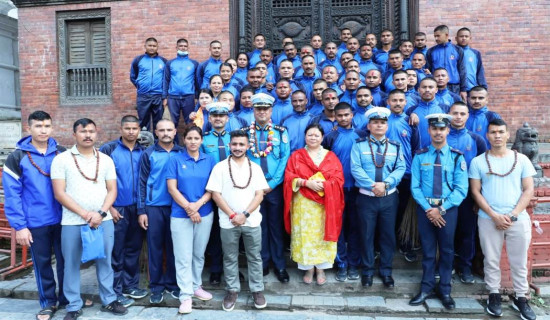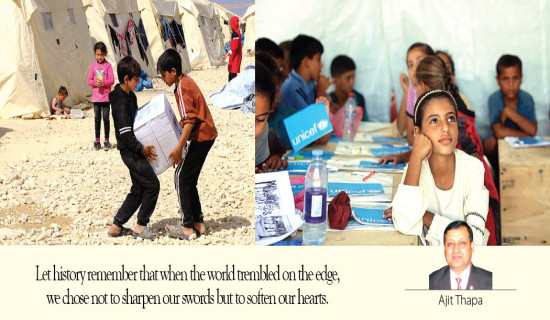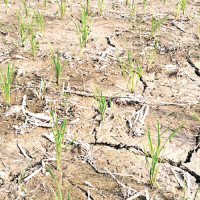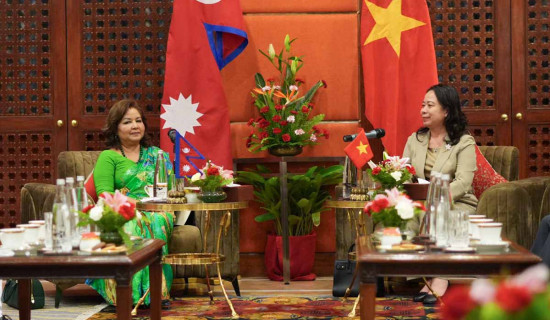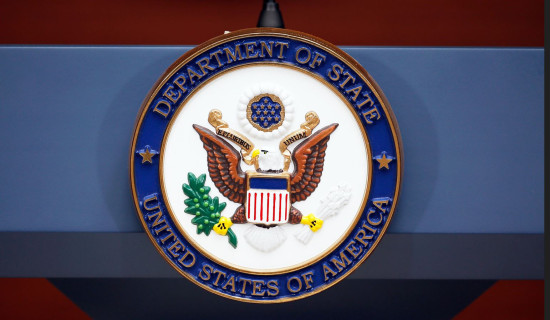- Sunday, 24 August 2025
Glimpses On Nepal’s History
History is an intriguing subject that encompasses all aspects of human activities in the distant past. Unlike myth, history chronicles past events in a systematic manner. Historians interpret them based on reliable sources and evidence.
The political, military, social, economic, and cultural histories are studied with curiosity as they are the sources of knowledge that help trace the pattern of development and give an outlook to future events.
As an ancient civilizational state, Nepal’s history is unique. It has been the cradle of various civilizations, cultures, religions, and Enlightenment traditions. Knowledge, wisdom, and ethics often superseded power.
This ancient heritage of the Vedic era fostered the ideas of dignity, courage, and autonomy among the Nepalis, which enabled them to preserve independence, sovereignty, and the right to self-determination throughout history.
A Short History of Nepal by noted historian Shreeram Prasad Upadhyaya presents Nepal’s history from Vedic to ancient and mediaeval to modern times. It has successfully thrown insight into the political, social, military, and cultural aspects of Nepali society in a linear way. It includes major trends, events, and evolutions up to the recent past. It has been divided into five chapters: ancient Nepal, mediaeval Nepal, modern Nepal, the Rana dynasty, and democratic practice.
The writer has recounted the Vedic history and that of the Aryans in a fascinating manner. The Aryans, who originated somewhere in the western part of Asia, left their original place in around 3500 BC, owing to the dearth of grassy lands for feeding their cattle, an increase in population, climate change, and their curiosity to visit new places. They moved towards Europe, Iran, and the Sindhu Valley, while some ruled over Mesopotamia. They wrote the four Vedas in Samskriti, setting principles, guidelines, and rituals for agriculture, administrative, social, family, religious, and political life.
The Vedic era is credited with the evolution of the following concepts: Rajan (king), Purohit (priest), Senani (army chief), Gramini (chief of the village), Sabha (assembly), and Samiti (committee). Known for their high moral standards, the Aryans were cattle breeders and engaged in agriculture, trade, and industry. Male and female students were equally educated. Viswamitra, Apala, and Ghosa were famous for composing hymns.
Upadhyaya resorts to myths and legends to describe the prehistoric phase of Kathmandu Valley, when it was believed to be a lake. Manjushree from the north and God Krishna, along with other Gopals from the south, came here and made the valley a suitable place for human settlement. He states that the two main rivers, Bagamati and Bishnumati, helped ancient farmers irrigate their lands, which were fertile enough to produce enough food for the population.
"Therefore, the people had enough time to engage in creative ventures like developing art and architecture and enjoy feats and festivals." The Vedic culture has a greater influence on the Nepali way o f life. Nepal's history from ancient to modern covers several dynasties and systems: the Gopal, the Kirata, and the Lichchavis in the ancient period; the Malla in the mediaeval period; the Shahs and Ranas in the modern period; and a democratic and republican set-up in the recent past.
According to him, the Gopal dynasty was important for the development of agriculture, the Kirat for the expansion of trade and industry, the Lichchavi for moral values, and the Mediaeval for its art and architecture.
Prithvi Narayan Shah made a great contribution to the unification of Nepal. The Rana period was significant for the preservation of sovereignty and integrity, and ‘democratic changes after the fall of the Ranas brought Nepal in touch with the outside world'. The relentless struggle of Nepalis led to the establishment of a republican, secular, and federal system.
The lion's share of the book deals with the history of modern Nepal, which begins with the unification campaigns of new Nepal, the Anglo-Nepal War, and the rise and fall of powerful rulers. He appreciated Bhimsen Thapa for his nationalism and modernising the Nepali Army according to the French model. While highlighting the conspiracies, murders, and massacres before and during the Rana regime, the author has mentioned interesting moves and decisions taken by Rana's prime ministers, which have both positive and negative implications for the country.
First Rana Prime Minister Jung Bahadur led fourteen thousand troops to suppress the Sepoy Mutiny in India. In return, he managed to get back four districts in present-day west Nepal, which were known as Naya Muluk. He was also allowed to take four hundred bullock carts loaded with valuable jewels looted from the palace of the Nawab of Oudh.
Prime Minister Bir Shumsher allowed the British to open a depot at Gorakhpur to recruit Nepali youths into the British Army. In 1904, Chandra Shumsher helped Younghusband's expedition into Tibet through Nepal despite the expedition was against Nepali economic interests.
Reforms, carried out by the government of BP Koirala and the late kings Mahendra and Birendra, are discussed in the book. Upadhyaya also includes important treaties, documents, and agreements, including the 1816 Sugauli Treaty, the 1950 Peace and Friendship Treaty with India, the Boundary Treaty with China, and the 12-Point Understanding between the then CPN-Maoist and the Seven Party Alliance.
The book is highly informative as it sketches out the major events of Nepal’s history. However, it does not adequately offer perspective to those events seen as turning points in deciding the course and fate of Nepalis.
A history book must possess the interpretative faculty of its author while serving as a source of enlightenment for its readers so that it enables them to cogently comprehend the political psychology and future traits of a nation’s evolution. If the author had overcome this intellectual deficit, it would have been a more valuable volume of Nepali history.



